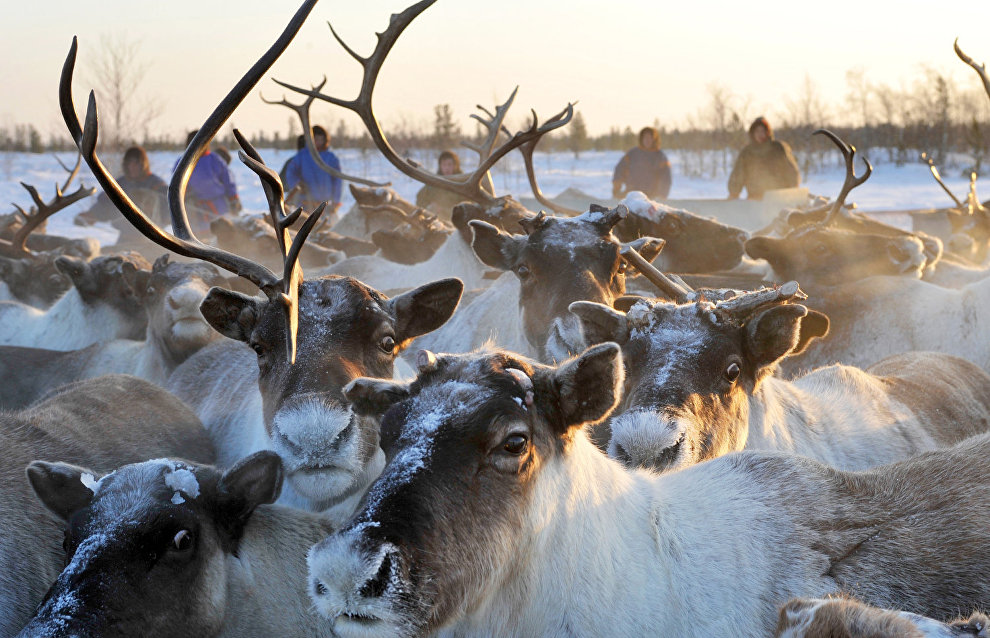The Nenets Autonomous Area changes reindeer breeding support rules
The Nenets Autonomous Area has amended the procedure governing the provision of state support for reindeer farms and reindeer meat packers, according to a statement posted on the area website. The new procedures concern the subsidies for venison production, as well as transportation from the slaughterhouses to the meat-packing facility in the town of Naryan-Mar.
In 2017, the number of subsidy recipients for the production of venison and category 1 offal was expanded. The right to partial reimbursement can now be used not only by companies, but also individuals and sole proprietors engaged in producing reindeer products. The availability of a lease agreement for reindeer grazing land in the Nenets Autonomous Area is a prerequisite for this.
Under the new rules, subsidies are granted at a rate of 130,000 rubles per metric ton of deer carcass and category 1 offal. Twelve deer farms and the Nenets agro-industrial company plan to send raw meat to meat packers in 2017. Taken together, they will provide 898 metric tons of venison. The subsidies will amount to 116.7 million rubles.
The Department of Natural Resources, Environment and Agribusiness of the Nenets Autonomous Area has also amended the procedure for granting subsidies for the transportation costs involved in delivering meat to Naryan-Mar for further processing. From now on, only the costs of bringing venison produced within that area will be covered. Other types of meat brought in from outside the region will be delivered to the city at the expense of the out-of-the-region companies.
The amount of subsidies will remain the same at 99 percent of commission outlays. The regional budget for 2017 provides $29.6 million rubles in funding for this purpose. The lack of arrears is a prerequisite to qualifying an applicant for this subsidy.
The venison is delivered to Naryan-Mar from the slaughterhouses by air or truck. When using air deliveries, the meat packer shall coordinate the route and the volume of transported raw materials with the local Department of Natural Resources, Environment and Agribusiness.
In 2017, 218 metric tons of venison are expected to be delivered by air from slaughterhouses in Nizhnaya Pesha, Indiga and Kotkino, and 860 tons will be trucked in from Kharuta, Vorkuta, Krasnoye, Nesi, Khorey-Vera, and the village of Kharyaginskoye.
